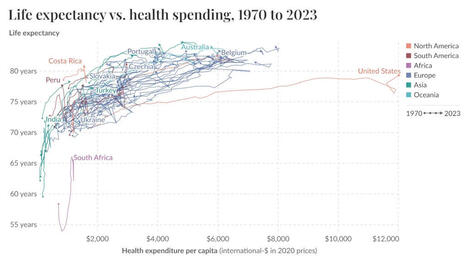Digital Transformation of Public Health for Noncommunicable Diseases (NCDs)

Blood pressure variability and arterial stiffness: the chicken or the egg? | Hypertension Research #prevention #assessment #cardiovascular
21/02/2024
Impact of 8 lifestyle factors on mortality and life expectancy among United States veterans: The Million Veteran Program – ScienceDirect
11/03/2024
The recent SARS-CoV-2 pandemic underscored the effectiveness and rapid deployment of digital public health interventions, notably the digital proximity tracing apps, leveraging Bluetooth capabilities to trace and notify users about potential infection exposures.
Digital proximity tracings showcased the promise of digital public health.
As the world pivots from pandemic responses, it becomes imperative to address noncommunicable diseases (NCDs) that account for a vast majority of health care expenses and premature disability-adjusted life years lost.
The narrative of digital transformation in the realm of NCD public health is distinct from infectious diseases.
The power of artificial intelligence (AI) in this digital transformation is noteworthy.
- AI can automate repetitive tasks, facilitating health care providers to prioritize personal interactions, especially those that cannot be digitalized like emotional support.
- Moreover, AI presents tools for individuals to be proactive in their health management. However, the human touch remains irreplaceable;
- AI serves as a companion guiding through the health care landscape.
Digital evolution, while revolutionary, poses its own set of challenges.
Issues of equity and access are at the forefront. Vulnerable populations, whether due to economic constraints, geographical barriers, or digital illiteracy, face the threat of being marginalized further.
This transformation mandates an inclusive strategy, focusing on not amplifying existing health disparities but eliminating them.
Population-level digital interventions in NCD prevention demand societal agreement.
Policies, like smoking bans or sugar taxes, though effective, might affect those not directly benefiting. Hence, all involved parties, from policy makers to the public, should have a balanced perspective on the advantages, risks, and expenses of these digital shifts.
For a successful digital shift in public health, especially concerning NCDs, AI’s potential to enhance efficiency, effectiveness, user experience, and equity—the “quadruple aim”—is undeniable.
However, it is vital that AI-driven initiatives in public health domains remain purposeful, offering improvements without compromising other objectives.
The broader success of digital public health hinges on transparent benchmarks and criteria, ensuring maximum benefits without sidelining minorities or vulnerable groups.
Especially in population-centric decisions, like resource allocation, AI’s ability to avoid bias is paramount.
Therefore, the continuous involvement of stakeholders, including patients and minority groups, remains pivotal in the progression of AI-integrated digital public health.
read the original paper at https://publichealth.jmir.org/2024/1/e49575/
Lire l’article complet sur : publichealth.jmir.org



